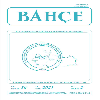Kavunda solgunluk ve kök çürüklüğü ile mücadelede kemigasyon
toprak kökenli patojen, kemigasyon, verim, fungusit, FUE, ekonomik analiz, kavun
Chemigation for fusarium wilt and root rot management on melon
soil-borne pathogens, chemigation, yield, fungicide, FUE, net return, melon,
___
- Abbott, W. S., 1925. A Method of Computing the Effectiveness of an Insecticide. Journal of Economic Entomology. (18):265–268.
- Anonim, 2005. Türkiye Toprakları Kirlilik Kontrol Yönetmeliği. (Resmi Gazete: 31.05.200) (http://www.resmigazete.gov.tr)
- Anonim, 2012. Tarımsal Yapı ve Üretim. (http://www.tuik.gov.tr)
- Brennman, T. B., H. R. Sumner and G. W. Harrison, 1990. Deposition and Retention of Chlorothalonil Applied to Peanut Foliage: Effects of Application Methods, Fungicide Formulations and Oil Additives. Peanut Science 17:80–84.
- Csinos, A. S., A. W. Jonhson and A. M. Golden, 1986. Metalaxyl and Fenamiphos Applied Through Irrigation Water to Control Black Shank/Root–Rot Complex on Tabacco. Plant Disease. 70:210–213.
- Forster, R. L. and R. G. Samson, 1984. Control of White Mold of Dry Beans by Fungicides Applied Via Sprinkler Irrigation. Annual Report Bean Improvement Cooperative 27:106. 1994.
- İnan, İ. H., 2001. Tarım Ekonomisi ve İşletmeciliği. T. Ü. Ziraat Fakültesi Öğrencileri İçin Hazırlanmış Ders Kitabı. 5. Baskı. Yayın Kodu: ISBN 975–93281–0–0. Tekirdağ. Baskı: Avcı Ofset, İstanbul.
- James, L. G., 1988. Principles of Farm Irrigation System Design. John Wiley and Sons. Inc, New York, p.543.
- Koike, S. T., K. V. Subbarao, R. M. Davis and T. A. Turini, 2003. Vegetable Disease Caused by Soil Borne Pathogens. University of California, Division of Agriculture and Natural Resources, Commercial Greenhouse Vegetable Handbook, Publication 21575, 1–13.
- Özbahce, A., 2014. Chemigation for Soil–Borne Pathogen Management on Melon Growth under Drought Stress. Australasian Plant Pathology. 43(3):299–306.
- Potter, H. S. and C. L. Schneider, 1981. Control of Rhizoctonia Crown Rot Diseases of Sugarbeet With Fungicides Applied by Sprinkler Irrigation. Journal American Society Sugar Beet Technology 21:50–55.
- Singleton, L. L., J. D. Mihail and C. M. Rush, 1992. Methods for Research on Soilborn Phytopathogenic Fungi. The American Phytopathological Society. pp. 115–128 and 157–165.
- Sumner, D. R. and R. H. Littrell, 1989. Effects of Chemigation With Clorothalonil and Diniconazole on Soil Fungi and Pod, Peg and Stem Disease of Peanut. The American Phytopathological Society, Plant Disease, 73(8):642–646.
- Vieira, R., C. M. F. Pinto and T. J. P. Junior, 2003. Chemigation with Benomyl and Fluazinam and Their Fungicidal Effects in Soil for White Mold Control on Dry Beans. Fitopatologia Braileira, 28(3):245–250.
- Vieira, R. F. and D. S. Sumner, 1999. Application of Fungicides to Foliage Through Overhead Sprinkler Irrigation a Review. Pesticide Science 53:412–422.
- Vural, H., D. Eşiyok ve İ. Duman, 2000. Kültür Sebzeleri. Ege Üniversitesi, Ziraat Fakültesi, ISBN: 975–97190–0–2.
- Yang, X. B., G. G. Ying and R. S. Kookana, 2010. Rapid Multi Residue Determination for Currently Used Pesticides in Agricultural Drainage Waters and Soils Using Gas Chromatography–Mass Spectrometry. Journal of Environmental Science and Health Part B 45:152–161.
- Yetisir, H., N. Sarı, İ. Solmaz, H. Ekiz and S. Yücel, 2010. New Fusarium wilt Resistant Melon (Cucumis melo var. cantalupensis) Varieties Developed by Dihaploidization: Sari F1, Yetisir F1, Solmaz F1, Emin F1 and Yucel F1. Acta Hort. 871:267–272.
- Yurtsever, N., 1984. Deneysel İstatistik Metotlar. (Mülga) Köy Hizmetleri Genel Müdürlüğü Toprak ve Gübre Araştırma Enstitüsü Müdürlüğü Yayın No: 121, Teknik Yayın No: 56, Ankara.
- Yücel, S., H. Pala, N. Sarı and K. Abak, 1994. Determination of Fusarium oxysporum f. sp. melonis Races in the East Mediterranean Region of Turkey and Response of Some Melon Genotypes to the Disease. 9th Congress of the Mediterranean Phytopathological Union, September 18–24, 1994, Kuşadası–Aydın, Türkiye, 87–89.
- ISSN: 1300-8943
- Yayın Aralığı: 2
- Başlangıç: 1968
- Yayıncı: Atatürk Bahçe Kültürleri Merkez Araştırma Enstitüsü
Genista lydia Boiss. var. lydia'nın vejetatif çoğaltımı
Kamil ERKEN, M. Ercan ÖZZAMBAK
Kavunda solgunluk ve kök çürüklüğü ile mücadelede kemigasyon
Aynur ÖZBAHÇE, A.fuat TARI, Seral YÜCEL, Oktay OKUR
Turan KARADENİZ, Mustafa Serdar ÇORUMLU
Elmanın fenolik bileşen ve lif içeriği
S. Seçil ERDOĞAN, Mehmet DEMİRCİ
Farklı geofit cinslerinin genomik DNA miktar ve saflıklarının belirlenmesi
Arif ATAK, Belinda AYDIN, Yeşim DOYĞACI, Adnan DOĞAN, Kutay Coşkun YILDIRIM, Erdal KAYA
